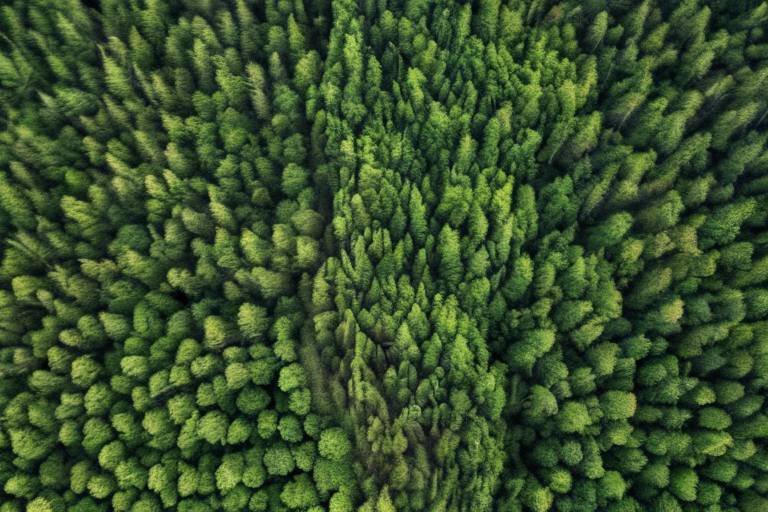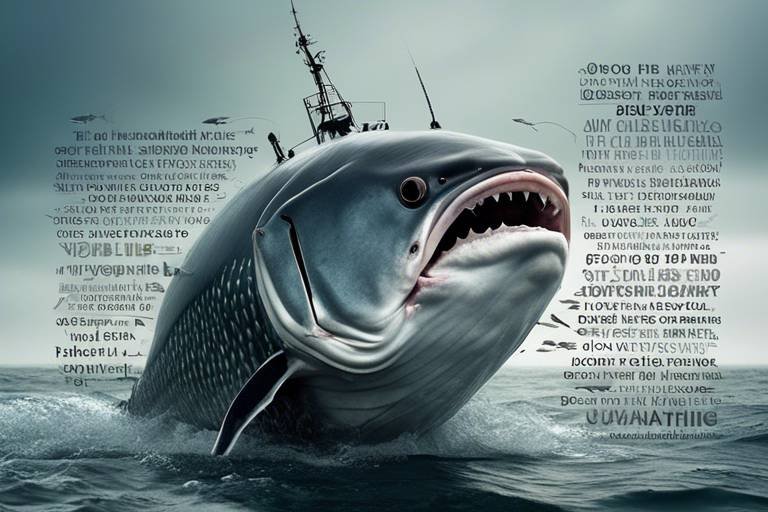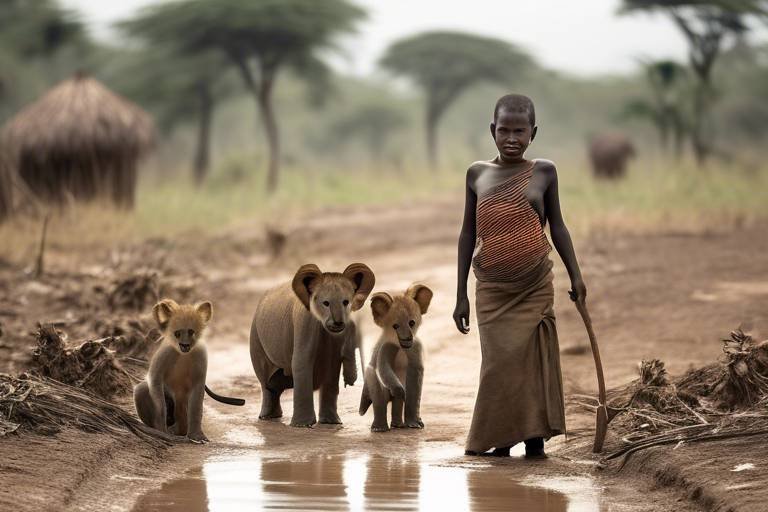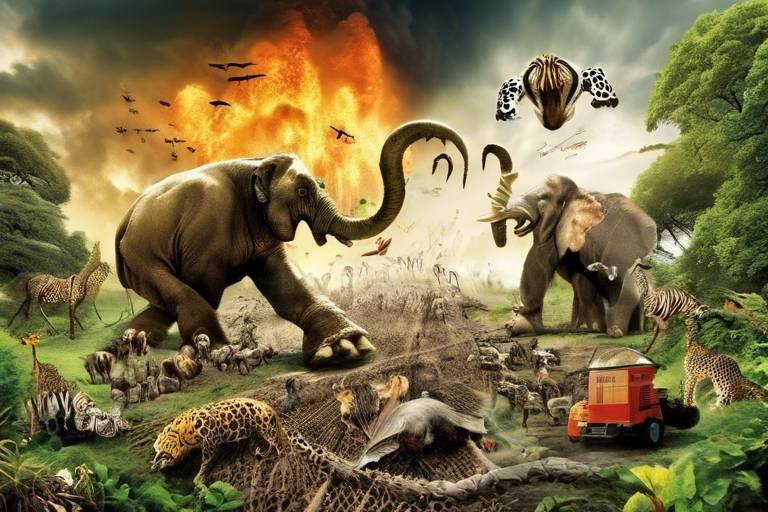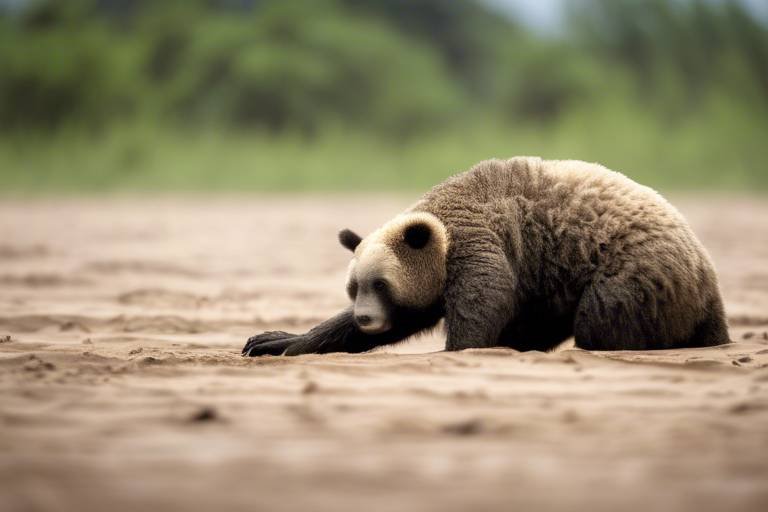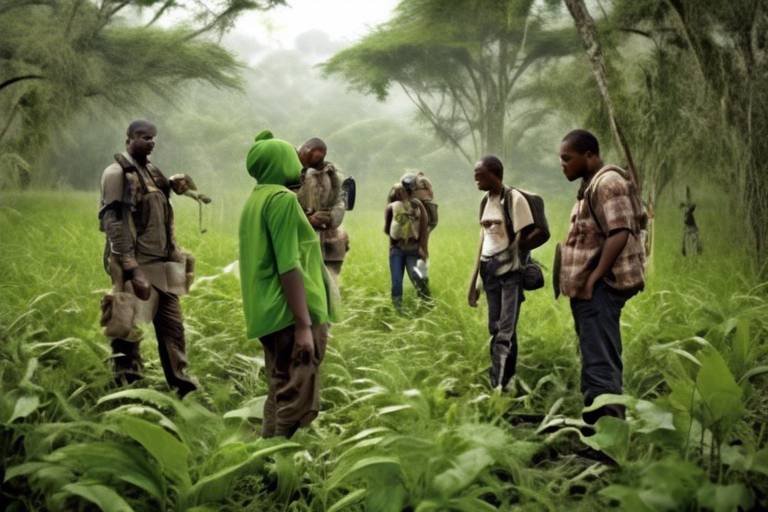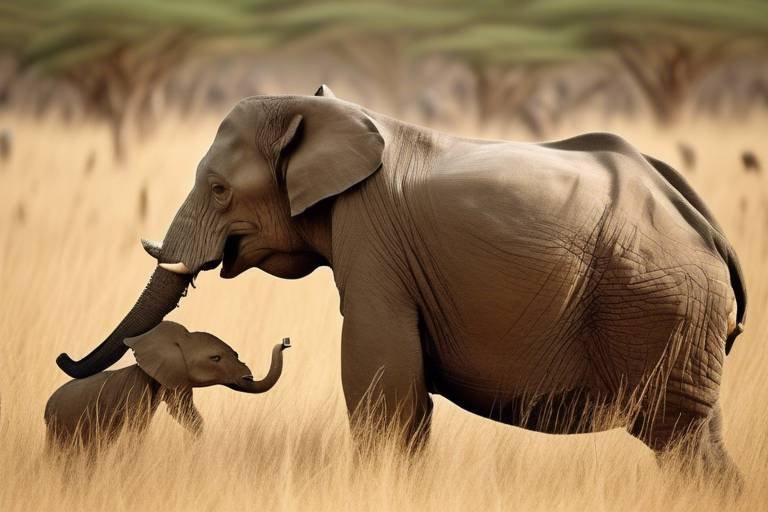Health Hazards: How Pollution Impacts Animal Well-being
In our rapidly industrializing world, the shadow of pollution looms larger than ever, casting a pall over not just human health but also the well-being of our planet's diverse animal species. Pollution comes in many forms, each with its own set of challenges and consequences. From the air we breathe to the water that sustains aquatic life, the effects of pollution are far-reaching and often devastating. Understanding how these pollutants affect animal health is not just an academic exercise; it's a crucial step towards conservation and ensuring a balanced ecosystem. By delving into the different types of pollution, we can uncover the intricate ways they impact animal well-being, and ultimately, our own survival.
Pollution manifests in various forms, each presenting unique threats to animal health. The primary types include:
- Air Pollution: Emitted from vehicles, factories, and natural disasters, airborne pollutants can have dire consequences for wildlife.
- Water Pollution: Contaminants from agricultural runoff, industrial discharges, and plastic waste wreak havoc on aquatic ecosystems.
- Soil Contamination: The accumulation of hazardous substances in the soil can affect terrestrial animals and the plants they rely on.
Each type of pollution has its own set of effects on various species and ecosystems, underscoring the need for targeted interventions to mitigate these impacts.
Air pollution is a significant threat to wildlife, with pollutants such as particulate matter and toxic gases infiltrating habitats and disrupting natural behaviors. Animals exposed to these airborne toxins can suffer from a range of physiological effects, including respiratory issues, reduced reproductive success, and even alterations in behavior. For instance, studies have shown that high levels of air pollution can lead to a decline in bird populations, as their respiratory systems struggle to cope with the toxic environment. The long-term consequences are alarming, as these impacts can threaten species survival and biodiversity.
To grasp the gravity of air pollution's impact, we can examine specific case studies that highlight the direct effects on various animal species. For example, the California condor, once on the brink of extinction, has faced significant challenges due to lead poisoning from spent ammunition, a form of pollution that affects their health and reproductive success. Similarly, urban areas have seen drastic declines in bat populations, attributed to air quality degradation and habitat loss.
Birds are particularly sensitive to changes in air quality. Research indicates that poor air conditions can lead to increased mortality rates and reduced breeding success. The American robin, for instance, has shown a marked decline in population in areas with high pollution levels. The intricate balance of ecosystems is at stake, and as birds play crucial roles in pollination and pest control, their decline can have cascading effects on the environment.
Many mammals also experience severe health complications due to air pollution. Species such as the red fox and white-tailed deer have been documented suffering from respiratory issues linked to poor air quality. These health problems not only affect their survival but also disrupt their role within the ecosystem. The implications can be far-reaching, leading to a decline in predator-prey dynamics and overall biodiversity.
The long-term ecological effects of air pollution extend beyond individual species, impacting entire ecosystems. Changes in animal populations can disrupt food chains and habitat stability. For example, if a key predator species declines due to air pollution, the prey population may explode, leading to overgrazing and depletion of vegetation. This domino effect can alter the landscape and reduce biodiversity, making it increasingly difficult for ecosystems to recover.
Water pollution poses a grave threat to aquatic ecosystems and the animals that inhabit them. Contaminants such as heavy metals, plastics, and pharmaceuticals infiltrate our waterways, severely impacting fish, amphibians, and other aquatic organisms. The sources of water pollution are numerous, ranging from agricultural runoff to industrial discharges, and each contributes to the degradation of aquatic habitats.
Fish populations are particularly vulnerable to pollutants. Heavy metals like mercury and lead can accumulate in fish tissues, leading to severe health issues and even death. Moreover, pharmaceuticals found in waterways can disrupt reproductive systems, leading to population declines. The balance of aquatic ecosystems relies heavily on healthy fish populations, and their decline can have dire consequences for both aquatic and terrestrial food webs.
Marine mammals face unique challenges due to water pollution, notably the bioaccumulation of toxins in their bodies. Species like whales and dolphins are particularly at risk, as they often occupy the top of the food chain. The health risks posed to these magnificent creatures are profound, leading to reproductive failures and increased mortality rates. Protecting marine ecosystems is crucial not just for the animals that inhabit them but for the health of our oceans and planet.
Q: How does air pollution affect animal health?
A: Air pollution can lead to respiratory issues, reduced reproductive success, and behavioral changes in wildlife.
Q: What are the main sources of water pollution affecting aquatic life?
A: Major sources include agricultural runoff, industrial discharges, and plastic waste.
Q: Why are birds particularly sensitive to air quality?
A: Birds depend on clean air for their respiratory health and are often the first indicators of environmental changes.
Q: What can be done to mitigate the effects of pollution on wildlife?
A: Implementing stricter pollution controls, promoting conservation efforts, and raising public awareness are essential steps toward protecting animal health.

Types of Pollution Affecting Animals
When we think about pollution, we often envision smoggy skies or trash-strewn rivers, but the reality is that pollution comes in many forms, each with its own set of challenges for the animal kingdom. Understanding these different types of pollution is crucial for grasping their impact on animal health and well-being. Let's break it down!
The main types of pollution that affect animals include:
- Air Pollution: This involves the release of harmful substances into the atmosphere, including particulate matter, nitrogen oxides, sulfur dioxide, and volatile organic compounds. These pollutants can lead to respiratory issues and other health problems in wildlife.
- Water Pollution: Contaminants such as plastics, heavy metals, and chemicals enter our water bodies, posing severe risks to aquatic life. Fish, amphibians, and even mammals that rely on water sources are particularly vulnerable.
- Soil Pollution: The degradation of soil quality due to pesticides, heavy metals, and industrial waste can affect the plants that animals depend on for food and habitat. This, in turn, impacts entire food chains.
Each type of pollution has unique effects on various species and ecosystems. For instance, air pollution can lead to decreased reproductive success in birds, while water pollution can cause fish populations to decline dramatically. Not only do these pollutants affect individual animals, but they also disrupt entire ecosystems, leading to a cascade of negative effects.
Moreover, pollution doesn't just impact the immediate environment; it can have long-term repercussions that ripple through the food web. For example, when a predator consumes a contaminated prey species, the toxins can accumulate in the predator's body, leading to health issues and even death. This bioaccumulation can threaten species at the top of the food chain, including mammals like otters and eagles.
To tackle these challenges effectively, targeted interventions are necessary. Understanding the specific sources of pollution and their effects on wildlife can help conservationists develop strategies to mitigate these impacts. For instance, reducing emissions from factories can improve air quality, while stricter regulations on waste disposal can help protect aquatic ecosystems.
In conclusion, recognizing the different types of pollution affecting animals is the first step towards effective conservation efforts. By addressing air, water, and soil pollution, we can help create a healthier environment for all living beings.
- What are the main sources of air pollution affecting animals? Major sources include vehicle emissions, industrial discharges, and agricultural activities.
- How does water pollution impact fish populations? Pollutants can cause diseases, disrupt reproductive functions, and lead to decreased oxygen levels in water.
- Can soil pollution affect terrestrial animals? Yes, contaminated soil can harm the plants that animals eat, leading to health issues and habitat loss.

Air Pollution and Wildlife
Air pollution is not just a human issue; it profoundly affects wildlife, too. From the majestic eagle soaring through the skies to the tiny hummingbird flitting among flowers, every creature is vulnerable to the invisible toxins that permeate our atmosphere. The sources of air pollution are numerous, including industrial emissions, vehicle exhaust, and even agricultural practices. These airborne pollutants, such as particulate matter and toxic gases, can have devastating physiological effects on animals, leading to a cascade of health problems that threaten their survival.
Consider the respiratory systems of animals. Just like humans, they rely on clean air to breathe and thrive. When pollutants invade their habitats, wildlife can experience a range of health issues, from chronic respiratory diseases to reduced reproductive success. For example, studies have shown that birds exposed to high levels of air pollution often exhibit decreased lung function and lower breeding rates. This is not just an isolated incident; it’s a widespread phenomenon that raises alarm bells for conservationists and ecologists alike.
Moreover, the impact of air pollution extends beyond individual animals. It disrupts entire ecosystems, leading to a domino effect that can alter food chains and habitat stability. When one species suffers, it can affect others that rely on it for food or ecological balance. Take, for instance, the case of pollinators like bees and butterflies. Poor air quality can impair their ability to navigate and find food, which in turn affects the plants they pollinate, ultimately impacting the entire ecosystem.
Examining specific case studies reveals just how dire the situation is for many species. For instance, the California Condor, once on the brink of extinction, continues to face threats from air pollution. Studies indicate that lead and other pollutants in their environment have led to significant declines in their populations. This highlights the urgent need for pollution control measures to protect these vulnerable populations. The plight of the California Condor is just one example among many, showing that air pollution is a pressing issue that cannot be ignored.
Birds are particularly sensitive to changes in air quality. Research has shown that poor air quality can lead to increased mortality rates among bird populations. For instance, the American Robin has been observed to have reduced nesting success in areas with high levels of air pollution. The correlation is stark: as pollution levels rise, so do the challenges faced by these avian species. This is not merely an environmental concern; it’s a matter of biodiversity and the health of our ecosystems.
Mammals, too, are not spared from the wrath of air pollution. Species such as deer and bears have been documented to suffer from respiratory complications due to exposure to polluted air. The health complications faced by these mammals can lead to decreased reproductive rates and increased vulnerability to diseases. In polluted environments, the struggle for survival becomes even more arduous, underscoring the interconnectedness of all living beings and the environments they inhabit.
The long-term ecological effects of air pollution are profound. They extend beyond individual species, impacting entire ecosystems and the delicate balance that sustains them. As air quality deteriorates, we witness shifts in species distribution, altered migratory patterns, and even changes in reproductive behaviors. These changes can disrupt food chains, leading to unforeseen consequences that ripple through the ecosystem. For instance, a decline in insect populations due to poor air quality can lead to reduced food availability for birds, which in turn affects larger predators in the food chain.
In conclusion, the impact of air pollution on wildlife is a complex web of interactions that poses serious threats to animal health and biodiversity. Understanding these effects is crucial for conservation efforts and public awareness. We must act now to mitigate pollution and protect our planet's precious wildlife.
- How does air pollution affect animal health? Air pollution can lead to respiratory diseases, reduced reproductive success, and increased mortality rates among wildlife.
- What are the main sources of air pollution affecting wildlife? Major sources include industrial emissions, vehicle exhaust, and agricultural practices.
- Which animals are most affected by air pollution? Birds, mammals, and aquatic life are particularly vulnerable, with varying impacts depending on the species and their habitat.
- What can be done to protect wildlife from air pollution? Implementing stricter pollution controls, increasing public awareness, and supporting conservation efforts are essential steps.

Case Studies of Affected Species
When we think about the impact of air pollution on wildlife, it's essential to consider real-world examples that highlight the severity of the issue. One of the most striking case studies involves the California Condor. Once on the brink of extinction, these magnificent birds have faced numerous challenges, not least of which is the detrimental impact of lead poisoning due to ingesting spent lead ammunition. Despite conservation efforts, air pollution continues to pose a significant threat to their survival, showcasing the interconnectedness of environmental health and species conservation.
Another poignant example is the Eastern Bluebird, a species that has shown alarming declines in population due to poor air quality. Research indicates that increased levels of particulate matter can lead to respiratory issues, affecting their ability to breed successfully. In urban areas where pollution levels are high, these birds often struggle to find adequate nesting sites, further exacerbating their decline. This situation serves as a reminder that pollution not only affects individual health but can also disrupt entire populations.
Let’s not overlook the American Robin, a common sight in many backyards. Studies have shown that exposure to air pollutants can impair their reproductive success. In areas with high levels of nitrogen dioxide, for instance, the hatching rates of robin eggs have been significantly lower compared to those in cleaner environments. This decline in reproductive success is alarming, as it indicates a broader trend affecting various species in polluted areas.
To illustrate the impact of air pollution on wildlife further, we can look at the following table that summarizes key species affected by air pollution along with the specific pollutants involved:
| Species | Type of Pollution | Impact |
|---|---|---|
| California Condor | Lead Poisoning | Declining population; risk of extinction |
| Eastern Bluebird | Particulate Matter | Respiratory issues; reduced breeding success |
| American Robin | Nitrogen Dioxide | Lower hatching rates; population decline |
These case studies not only highlight the direct effects of air pollution on individual species but also emphasize the urgent need for targeted interventions. The stories of these birds serve as a wake-up call, urging us to take action to reduce pollution levels and protect vulnerable wildlife. The implications of air pollution extend beyond just the immediate effects on health; they ripple through ecosystems, affecting food webs and biodiversity. By understanding these case studies, we can better appreciate the intricate balance of life and the critical role that clean air plays in preserving it.
- What are the main sources of air pollution affecting wildlife?
Common sources include vehicle emissions, industrial discharges, and agricultural activities, which release various pollutants into the atmosphere.
- How does air pollution specifically impact bird species?
Air pollution can lead to respiratory issues, reduced reproductive success, and habitat degradation, significantly affecting bird populations.
- Are there any conservation efforts in place to protect affected species?
Yes, various organizations are working to implement pollution control measures, restore habitats, and educate the public about the importance of maintaining clean air for wildlife.

Birds and Air Quality
Birds are incredibly sensitive indicators of environmental health, and air quality plays a pivotal role in their survival. When we think about pollution, we often picture factories belching smoke or cars choking the roads, but the impact of airborne pollutants on our feathered friends is profound and often overlooked. Poor air quality can lead to a range of health issues for birds, affecting their respiratory systems and overall well-being. Imagine trying to breathe in a smoky room; that’s the kind of struggle birds face when pollution levels rise.
Research has shown that particulate matter, which includes tiny particles from combustion processes, can infiltrate birds' lungs and cause serious health complications. The effects are not just immediate; they can lead to chronic conditions that affect their ability to thrive in their environments. For instance, studies have indicated that high levels of air pollution can reduce breeding success in birds, leading to declining populations and disrupted ecosystems. When birds can't reproduce successfully, it sends shockwaves through the food chain, affecting everything from insects to larger predators.
Moreover, the impact of air quality on birds extends beyond physiology. Behavioral changes, such as altered migration patterns and reduced foraging efficiency, can also occur. Birds depend on clean air to navigate and find food, and when their environment is compromised, it can lead to increased mortality rates and diminished biodiversity. For example, certain species of songbirds have shown a decreased ability to sing in polluted areas, which can hinder their ability to attract mates and establish territories.
To illustrate the severity of air pollution's impact on birds, consider the following table that summarizes key pollutants and their effects:
| Pollutant | Source | Impact on Birds |
|---|---|---|
| Particulate Matter (PM2.5) | Vehicle emissions, industrial processes | Respiratory issues, reduced reproductive success |
| Nitrogen Dioxide (NO2) | Burning fossil fuels | Impaired navigation, altered migration |
| Sulfur Dioxide (SO2) | Power plants, volcanic eruptions | Damage to feathers, decreased survival rates |
In conclusion, the quality of air is not just a statistic; it’s a matter of life and death for many bird species. The link between air pollution and bird health underscores the urgent need for effective pollution control measures. As we work towards cleaner air, we not only protect birds but also the intricate web of life that relies on them. Understanding these connections is crucial for conservation efforts and for ensuring that future generations can enjoy the beauty and songs of our avian companions.
- How does air pollution affect bird migration? Air pollution can disrupt migratory patterns by impairing birds' ability to navigate and find food, leading to increased mortality rates.
- What are the most common pollutants affecting birds? Common pollutants include particulate matter, nitrogen dioxide, and sulfur dioxide, all of which can have detrimental effects on bird health.
- What can be done to improve air quality for birds? Implementing stricter emissions regulations, promoting public transportation, and supporting renewable energy sources can significantly improve air quality.

Mammals and Respiratory Issues
When we think about pollution, we often picture factories belching smoke or plastic waste choking our oceans. However, the invisible threat of air pollution looms large, especially for mammals. These creatures, from the majestic elephants roaming the savannahs to the tiny bats flitting through urban night skies, are not immune to the detrimental effects of polluted air. In fact, mammals are particularly vulnerable to respiratory issues caused by various airborne pollutants. Just imagine trying to breathe in a smoky room—now, consider how difficult it must be for wildlife living in polluted environments.
The primary culprits behind these respiratory problems include particulate matter, ozone, and nitrogen dioxide. These pollutants can lead to a range of health issues, from chronic coughs and lung infections to more severe conditions like pulmonary fibrosis and even premature death. For mammals, especially those living in urban areas, the consequences can be dire. For example, studies have shown that urban-dwelling mammals often exhibit higher levels of stress hormones, which can further compromise their immune systems and make them more susceptible to diseases.
Moreover, the impact of air pollution is not just limited to immediate health effects; it can have long-lasting repercussions on mammal populations. Take, for instance, the case of the American bison. These iconic mammals have been observed to experience decreased reproductive success and higher mortality rates in areas with elevated pollution levels. This not only threatens their survival but also disrupts the entire ecosystem they inhabit, as their grazing patterns play a crucial role in maintaining the health of grasslands.
To illustrate the severity of the situation, consider the following statistics:
| Pollutant | Common Effects on Mammals |
|---|---|
| Particulate Matter | Respiratory diseases, reduced lung function |
| Ozone | Increased susceptibility to infections, reduced reproductive success |
| Nitrogen Dioxide | Inflammation of respiratory tract, chronic bronchitis |
It's also important to note that mammals often rely on their sense of smell for various behaviors, including finding food, mating, and avoiding predators. Air pollution can impair these senses, making it harder for them to thrive in their natural habitats. Picture a wolf unable to detect the scent of its prey because of a haze of pollutants—this not only affects individual animals but can lead to a cascading effect on the entire food web.
In conclusion, the relationship between mammals and air pollution is complex and multifaceted. As we continue to grapple with the growing threat of pollution, it becomes increasingly clear that we must prioritize cleaner air initiatives. Protecting mammal populations is not just about saving individual species; it's about preserving the intricate balance of our ecosystems. As stewards of the planet, we have a responsibility to advocate for policies that mitigate pollution and safeguard the health of all living beings.
- What are the main pollutants affecting mammals? The primary pollutants include particulate matter, ozone, and nitrogen dioxide, which can lead to severe respiratory issues.
- How does air pollution impact mammal reproduction? Air pollution can lead to increased stress levels and health complications, ultimately reducing reproductive success in mammals.
- What can be done to protect mammals from air pollution? Advocating for cleaner air policies, reducing emissions, and supporting conservation efforts can help protect mammal populations from the harmful effects of pollution.

Long-term Ecological Effects
The long-term ecological effects of air pollution extend far beyond the immediate health issues faced by individual species. When we think about air pollution, it’s easy to focus on the visible smog or the health warnings for humans, but the truth is that our environment is a complex web of life. Each strand, or species, plays a vital role in maintaining the balance of ecosystems. When one strand is weakened or damaged, the entire tapestry can begin to unravel.
For instance, consider the impact of pollutants like nitrogen oxides and sulfur dioxide. These substances not only harm the respiratory systems of animals but also contribute to acid rain, which can alter soil chemistry and water bodies. This change can lead to a decline in plant life, which serves as the foundation for many ecosystems. Without healthy plant populations, herbivores struggle to survive, leading to a cascading effect throughout the food chain. This phenomenon is often referred to as a trophic cascade, where the decline of one species can lead to the decline of others, ultimately affecting biodiversity.
Moreover, air pollution can disrupt migratory patterns in birds and other animals. Many species rely on specific cues from their environment, such as the scent of flowers or the clarity of the air, to navigate during migration. When these cues are altered due to pollution, it can lead to misguided journeys and decreased reproductive success. Imagine a bird trying to find its way home but getting lost in a fog of pollution—this is not just a poetic image; it’s a reality for many species today.
Additionally, the effects of air pollution can alter habitat stability. Pollutants can change the physical and chemical properties of habitats, making them less hospitable for native species. For example, increased levels of carbon dioxide can lead to changes in plant growth patterns, which in turn affects the animals that depend on those plants for food and shelter. This creates a ripple effect that can change the entire ecosystem's structure over time.
To illustrate the long-term impacts of air pollution on ecosystems, we can look at the following table that summarizes the key ecological effects:
| Type of Impact | Description | Examples |
|---|---|---|
| Species Decline | Reduction in populations of sensitive species | Songbirds, amphibians |
| Food Chain Disruption | Altered relationships between predators and prey | Decline of herbivores affects carnivores |
| Habitat Alteration | Changes in habitat conditions leading to loss of biodiversity | Wetlands affected by acid rain |
In summary, the long-term ecological effects of air pollution are profound and multifaceted. They influence not only the health of individual species but also the intricate relationships that sustain entire ecosystems. As we continue to confront the realities of pollution, it becomes increasingly clear that protecting our air quality is not just about safeguarding human health; it's about preserving the rich tapestry of life on Earth.
- What are the main pollutants affecting animal health? Common pollutants include particulate matter, nitrogen oxides, sulfur dioxide, and heavy metals.
- How does air pollution affect biodiversity? Air pollution can lead to species decline, habitat alteration, and food chain disruptions, all of which threaten biodiversity.
- What can be done to mitigate the effects of pollution on wildlife? Implementing stricter regulations on emissions, restoring habitats, and increasing public awareness can help address these issues.
- Are there specific species more vulnerable to air pollution? Yes, species such as birds and amphibians are particularly sensitive to changes in air quality.

Water Pollution and Aquatic Life
Water pollution poses a grave threat to aquatic ecosystems and the animals that inhabit them. From rivers and lakes to oceans and estuaries, the introduction of harmful substances into water bodies can disrupt the delicate balance of life. When we think about pollution, we often imagine smoke and fumes, but the reality is that our waters are equally, if not more, affected. The sources of water pollution are varied and include industrial discharges, agricultural runoff, and even plastic waste. These pollutants not only harm aquatic animals directly but also create ripple effects throughout the food chain. For instance, when pesticides wash into rivers, they can kill off not just the targeted pests but also the fish and birds that rely on those ecosystems.
The effects of water pollution on aquatic life can be devastating. Fish, amphibians, and invertebrates are particularly vulnerable. Many aquatic species rely on clean water for breeding, feeding, and shelter. Contaminants like heavy metals, pesticides, and pharmaceuticals can lead to a range of health issues, from reproductive failure to increased mortality rates. For example, heavy metals such as mercury and lead can accumulate in the tissues of fish, leading to not only their decline but also posing health risks to predators, including humans, who consume them. It's a classic case of bioaccumulation, where the concentration of toxins increases as you move up the food chain.
Moreover, water pollution can lead to the proliferation of harmful algal blooms, which produce toxins that can kill fish and other marine life. These blooms often occur in nutrient-rich waters, where excess fertilizers from agricultural runoff fuel their growth. The result is a toxic environment that can suffocate marine life and disrupt entire ecosystems. The impact is not just immediate; long-term exposure to polluted waters can lead to chronic health issues in aquatic species, affecting their growth and reproduction rates.
Fish populations are particularly vulnerable to pollutants such as heavy metals and pharmaceuticals. Studies have shown that exposure to these contaminants can lead to a variety of health issues in fish, including reproductive problems, behavioral changes, and increased susceptibility to disease. For instance, a study conducted on the effects of pharmaceutical residues in rivers found that fish exposed to these substances exhibited altered reproductive behaviors, leading to decreased population numbers. The consequences of such disruptions can extend far beyond the individual species, affecting the entire aquatic ecosystem.
Marine mammals face unique challenges due to water pollution, including the bioaccumulation of toxins. Species like whales and dolphins are at the top of the food chain, making them particularly susceptible to the harmful effects of pollutants that accumulate in their prey. As these toxins build up in their bodies over time, they can lead to serious health risks, including compromised immune systems, reproductive failures, and even premature death. For example, studies have shown that orcas in polluted waters exhibit significantly higher levels of pollutants in their bodies, which correlates with lower reproductive success rates. This highlights the urgent need for marine conservation efforts to mitigate the impacts of pollution on these majestic creatures.
- What are the main sources of water pollution? The main sources include industrial discharges, agricultural runoff, sewage, and plastic waste.
- How does water pollution affect fish populations? Water pollution can lead to reproductive issues, behavioral changes, and increased mortality rates in fish.
- What can be done to reduce water pollution? Implementing stricter regulations on industrial discharges, promoting sustainable agricultural practices, and increasing public awareness can help reduce water pollution.
- Are marine mammals affected by water pollution? Yes, marine mammals are significantly impacted by water pollution, particularly through the bioaccumulation of toxins in their bodies.

Impact on Fish Populations
The health of fish populations is intricately tied to the quality of their aquatic environments. Unfortunately, water pollution has become a critical issue that threatens these vital species. Pollutants such as heavy metals, plastics, and pharmaceuticals enter water bodies through various channels, including industrial runoff, agricultural practices, and improper waste disposal. As a result, fish are exposed to a cocktail of harmful substances that can lead to dire health consequences.
One of the most concerning impacts of pollution on fish is the phenomenon of bioaccumulation. This occurs when fish absorb toxins faster than they can eliminate them. For instance, heavy metals like mercury and lead can accumulate in fish tissues over time, leading to serious health issues, including neurological damage and reproductive failures. The implications of this are staggering—not only do affected fish populations struggle to survive, but they also pose a risk to humans who consume contaminated fish. The cycle of pollution thus continues, affecting multiple layers of the food chain.
Moreover, the presence of pharmaceuticals in water systems—often stemming from human waste and runoff—has been shown to disrupt the endocrine systems of fish. These chemicals can lead to altered reproductive behaviors and developmental abnormalities. For example, studies have found that exposure to certain hormones can result in male fish developing female characteristics, a phenomenon that can threaten the viability of fish populations in the long run.
To illustrate the severity of this issue, consider the following table that summarizes the key pollutants affecting fish health:
| Pollutant | Source | Impact on Fish |
|---|---|---|
| Heavy Metals | Industrial runoff, mining | Neurological damage, reproductive failure |
| Plastics | Improper waste disposal, marine debris | Ingestion leading to internal injuries, starvation |
| Pharmaceuticals | Sewage, agricultural runoff | Endocrine disruption, abnormal reproductive traits |
In addition to these direct impacts, pollution can also alter the habitats where fish live. Changes in water temperature, oxygen levels, and pH due to pollution can create environments that are inhospitable for many species. For example, algal blooms, often fueled by nutrient pollution from fertilizers, can deplete oxygen levels in water, leading to "dead zones" where fish and other aquatic life cannot survive. This not only diminishes biodiversity but also disrupts the ecological balance, making it difficult for fish populations to thrive.
As we delve deeper into the effects of pollution on fish populations, it's clear that the challenges they face are multifaceted and complex. Addressing these issues requires a concerted effort from governments, conservationists, and the public to implement effective pollution control measures and restore the health of our aquatic ecosystems.
- What are the primary pollutants affecting fish populations?
Heavy metals, plastics, and pharmaceuticals are the main pollutants impacting fish health. - How does bioaccumulation affect fish?
Bioaccumulation leads to the buildup of toxins in fish tissues, causing health issues like neurological damage and reproductive failures. - What can be done to protect fish populations from pollution?
Implementing stricter pollution controls, promoting sustainable agricultural practices, and increasing public awareness are essential steps in protecting fish populations.

Effects on Marine Mammals
Marine mammals, including whales, dolphins, and seals, are facing unprecedented challenges due to water pollution. These magnificent creatures are not just symbols of the ocean's beauty; they play crucial roles in maintaining the health of marine ecosystems. However, as pollution levels rise, so do the risks associated with their survival and well-being. One of the primary concerns is bioaccumulation, a process where toxic substances accumulate in an organism's body over time, leading to severe health complications.
Many marine mammals are at the top of the food chain, which makes them particularly vulnerable to pollutants such as heavy metals, PCBs (polychlorinated biphenyls), and various pharmaceuticals that enter the ocean through runoff and waste disposal. These contaminants can lead to a range of health issues, including reproductive failures, compromised immune systems, and even increased mortality rates. For instance, studies have shown that high levels of mercury can cause neurological damage in dolphins, affecting their behavior and ability to hunt.
In addition to direct health impacts, pollution also disrupts the delicate balance of marine ecosystems. For example, when pollutants enter the food web, they can lead to a decline in fish populations, which are a primary food source for many marine mammals. The reduction in available prey can force these animals to travel further and expend more energy in search of food, ultimately affecting their reproductive success and overall population stability.
Moreover, the accumulation of pollutants in marine mammals can also have implications for human health. As humans consume seafood, they may inadvertently ingest these toxins, leading to health risks for people as well. This connection highlights the urgent need for comprehensive marine conservation efforts and pollution control measures.
To better understand the effects of pollution on marine mammals, researchers are continually monitoring various populations. The table below summarizes some notable findings from recent studies:
| Species | Pollutant | Health Effect | Location |
|---|---|---|---|
| Beluga Whale | PCBs | Immune dysfunction | St. Lawrence River, Canada |
| Orca | Heavy metals | Reproductive issues | Puget Sound, USA |
| Common Dolphin | Mercury | Neurological damage | Gulf of Mexico |
As we reflect on the plight of marine mammals, it's essential to recognize that their survival is intricately linked to the health of our oceans. By addressing pollution at its source and advocating for cleaner practices, we can help ensure that these incredible creatures continue to thrive in their natural habitats.
- What are the main pollutants affecting marine mammals?
Heavy metals, PCBs, and pharmaceuticals are among the most harmful pollutants that impact marine mammals. - How does pollution affect the food chain?
Pollutants can accumulate in prey species, leading to a decline in their populations, which in turn affects the predators that rely on them, including marine mammals. - What can be done to protect marine mammals from pollution?
Implementing stricter regulations on waste disposal, promoting sustainable fishing practices, and raising public awareness about marine conservation can help protect these species.
Frequently Asked Questions
- How does air pollution affect wildlife?
Air pollution can have devastating effects on wildlife, particularly on their respiratory systems. Pollutants like particulate matter and toxic gases can lead to health issues for many species, including reduced breeding success and increased mortality rates. Birds, for instance, are especially susceptible, often showing declines in population due to poor air quality.
- What are the main sources of water pollution impacting aquatic life?
Water pollution stems from various sources, including industrial discharges, agricultural runoff, and sewage overflow. These contaminants introduce harmful substances like heavy metals and pharmaceuticals into aquatic ecosystems, posing serious risks to fish and marine mammals. The health of these animals can be compromised, affecting their reproduction and overall survival.
- Can pollution lead to long-term ecological changes?
Absolutely! Pollution can disrupt entire ecosystems, leading to changes in food chains and habitat stability. For example, as certain species decline due to pollution, it can create a ripple effect, impacting predators and prey alike. This disruption can alter the balance of an ecosystem, making it less resilient to other environmental stresses.
- What specific pollutants are harmful to fish populations?
Fish populations are particularly vulnerable to heavy metals, such as mercury and lead, as well as pharmaceuticals that enter water bodies through various means. These pollutants can affect fish health by causing developmental issues, reproductive failures, and increased susceptibility to diseases, ultimately threatening their populations and the ecosystems they inhabit.
- How do marine mammals like whales and dolphins suffer from water pollution?
Marine mammals face unique challenges due to water pollution, primarily through the bioaccumulation of toxins in their bodies. As they consume contaminated prey, these toxins can build up, leading to serious health issues, including reproductive problems and weakened immune systems. This makes conservation efforts crucial for protecting these magnificent creatures.







